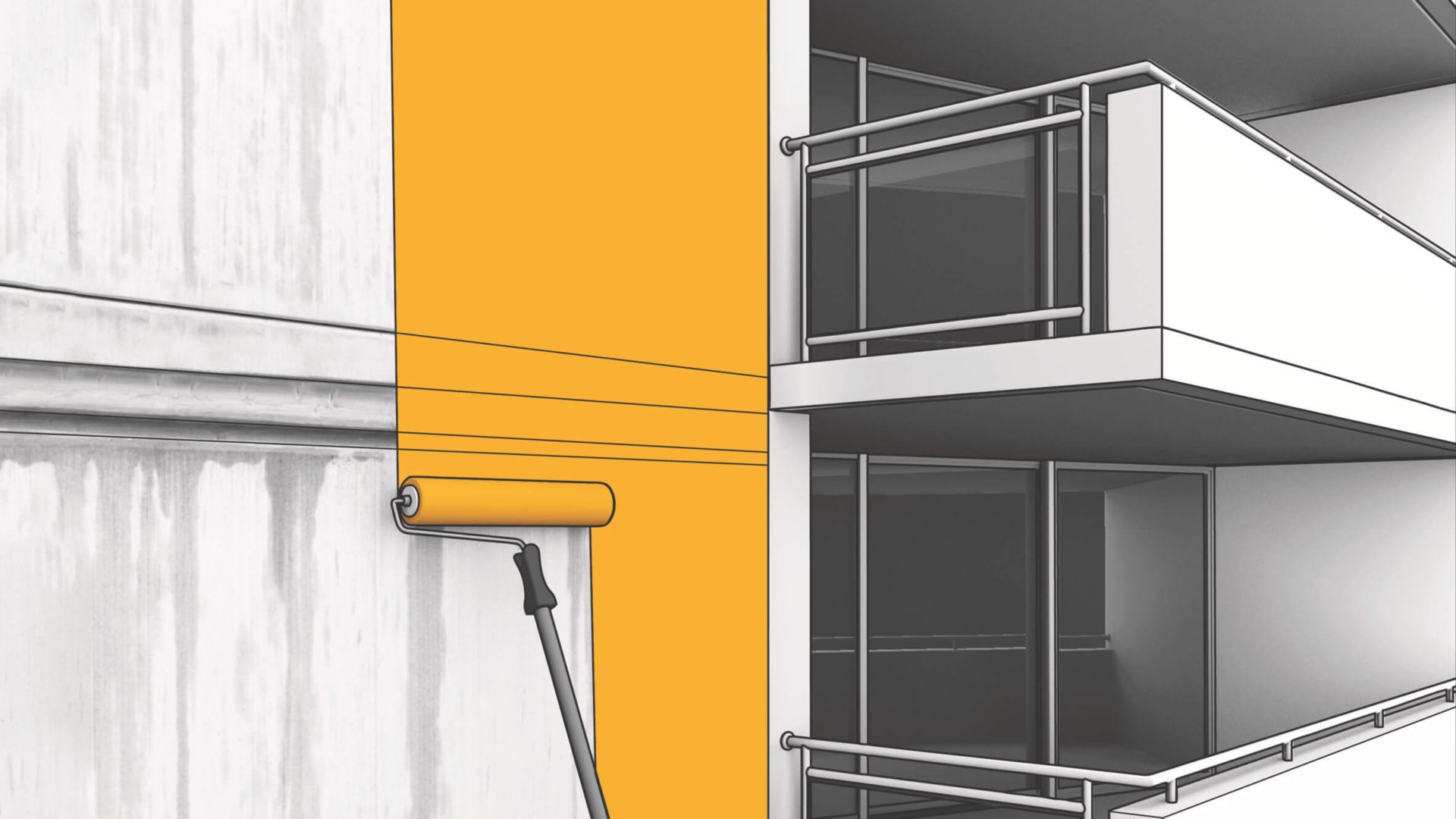Since concrete structures are often exposed to different aggressive environments, they require high quality protection systems. Reinforced concrete structures are built to serve many generations to come. However, concrete faces many threats of natural deterioration, damage and reinforcement corrosion.
For over 100 years, Sika has extensive experience and expertise in the repair and protection of concrete. With all of the necessary products and systems for the technically correct repair and protection of concrete, Sika delivers high performance solutions in accordance with the principles of European Standards EN 1504.
Concrete structures are susceptible to various environmental factors that can lead to deterioration and reduced lifespan. Sika UK offers a comprehensive range of concrete protection products designed to safeguard your investments and ensure long-term durability.
Types of Concrete Protection Products
Concrete Structures Have a Lot of Stress
At first sight, concrete seems like a solid material that allows no penetration of aggressive materials. However, the hydration of cement as a binder makes concrete a naturally porous substance. A network of pores and voids of different sizes allows the penetration of different molecules and ions over time.
Depending on their location and use, concrete structures are subjected to a wide range of exposure conditions – from normal atmospheric carbonation to the aggressive influences in polluted urban and industrial environments, plus marine atmosphere and liquid or gaseous chemicals, along with influencers that can damage or attack the concrete and embedded steel reinforcement.
Water can penetrate naturally through the capillary pore structure of reinforced concrete.
Reinforcement corrosion, cracks or spalling can occur in areas of carbonated concrete or where there is high chloride content on the surface of steel reinforcing bars.
The freeze-thaw process creates stress in the concrete matrix due to free water expansion in the capillary pores during freezing conditions. This can result in surface scaling in poor quality concrete, and may be greatly accelerated by chlorides in the water.
Overloading due to increasing traffic loads, inadequate design, damage to the structure, stress/ fatigue failure, earthquake effects, or any other mechanical impact such as vehicle impact, can all exceed or reduce the structure’s load capacity.
Some structures, such as chemical plants, sewer systems or waste water treatment plants, are exposed to varying levels of chemical attacks. Special coatings may be required.
Buildings and bridges may be subjected to a wide variation of temperatures from day to night / winter to summer, or between different sides or surfaces of the structure. These repeating cycles result in thermal stresses and movement in the concrete structure that can also cause cracks.
Reinforced concrete may be damaged from fire exposure. Special intumescent coatings may be used to protect structures against fire. Coatings should not add fuel to the fire to avoid increasing its intensity. Some structures like tunnels have special considerations with this particular risk.
Carbon dioxide (CO2) reacts with calcium hydroxide (Ca(OH)2) in the cement matrix pore liquid of concrete structures, and it is deposited as calcium carbonate (CaCO3). This process, known as carbonation, reduces the strength of embedded steel reinforcement once it reaches them.
Chlorides come from de-icing salts used in winter, or from saltwater in marine environments. They can penetrate the concrete structure, and once they reach the reinforcement bars, they can locally destroy the passivation film causing fast pitting corrosion.
Sika Offers All Types of Technology for Concrete Protection
For over 100 years, we have gained extensive experience and expertise in the repair and protection of concrete. Sika has all the necessary products and systems for technically correct concrete repair and protection.
To adapt the concrete protection method to the specific project needs (e.g. exposure, concrete conditions, time constraints, accessibility, etc.), our customers have the possibility to choose among the following solutions:
Active corrosion inhibitors
Using corrosion inhibitors may be a cost-effective solution to deal with corrosion of reinforcement in reinforced concrete structures. It depends on the exposures, environment, quality of concrete and amount of concrete cover.
Based on these factors, passive or active corrosion inhibitors are selected. Neither system alters the concrete appearance.
Passive corrosion inhibitors
Passive corrosion inhibitors, which includes hydrophobic impregnations, are a special concrete protection solution applied to reduce water uptake and prevent ingress of water-dissolved contaminants such as chlorides. They are easy and fast to apply without causing any change to the concrete appearance.
Protective coatings
To provide specific protection such as anti-carbonation or chemical resistance, a film-forming protective coat could be applied on the surface. Such protective coatings are available as rigid, plasto-elastic or elastic systems.
Sika also has anti-graffiti and anti-fly poster coatings to protect concrete, wood, or masonry permanently from deterioration and vandalism.
Cathodic protection
It is possible to electro-chemically reverse the naturally occurring corrosion current in concrete.
By applying a sacrificial metal (anode) or current, the cathodic protection solution ensures that the steel rebar stays passivated inside the concrete (cathodic mode). It is often the last and most effective way to refurbish critical infrastructure.
Application Examples
Need more information about Concrete Protection?
Total Corrosion Management
All of the above systems can also be combined. In many cases, concrete protection goes hand-in-hand with partial concrete repair and/or structural strengthening - both solutions which are also available from Sika.

